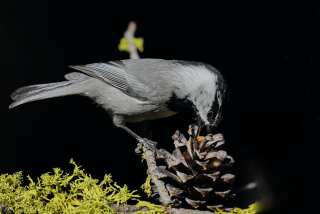Invasion of the 17-year cicada: Predators, even people, will feast
- Share via
As the East Coast of the United States braces for the deafening invasion of the 17-year cicada, a motley collection of predators -- including some humans -- are licking their chops in anticipation of an immense insect feast.
Billions of cicada nymphs will soon spring from their hiding place below ground and eventually fly to the treetops for a courting, mating and egg-laying ritual of biblical proportions.
The massive emergence, which University of Maryland entomology professor Michael Raupp likened to a “huge tsunami,” will roll from North Carolina to New York. Although the reason for the insect’s periodic appearance remains a mystery, many scientists hyothesize that it’s part of the red-eyed bug’s survival strategy -- predator satiation.
PHOTOS: Beautiful, bizarre bugs
By appearing suddenly in overwhelming numbers, scientists believe that predators such as birds, rodents, snakes and even fish become so full while feasting on the bugs that plenty more remain alive to mate and lay eggs.
The insects enter their most vulnerable stage soon after emerging from the ground, when they shed their old skin, or molt. Their new bodies, equipped with wings, are soft, and they must wait for their shells to harden before they can take flight.
Anyone who has ever driven a car during a full-fledged cicada invasion knows how short the bug’s life can be. Windshields and grills are often left a bloody mess.
It’s not, however, just the motoring public that thins the insect’s ranks. Entomologists have even published recipes for cooking the winged invaders, noting that they are a great source of low-fat protein. (These scientists recommend, however, that you first check with your doctor before planning a cicada dinner.)
For more details on the invasion, check out the Cicada Mania website. Also, watch this CNS Maryland report in which Raupp discusses the nutritional value of cicadas.
ALSO:
Geckos in tiny harnesses keep their grip
Return to Science Now blog.
Follow me on Twitter @montemorin






